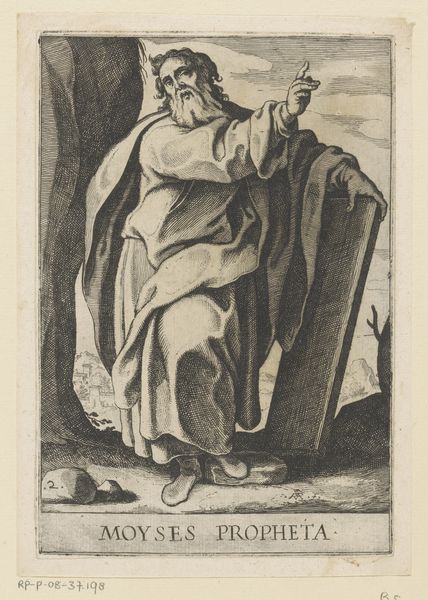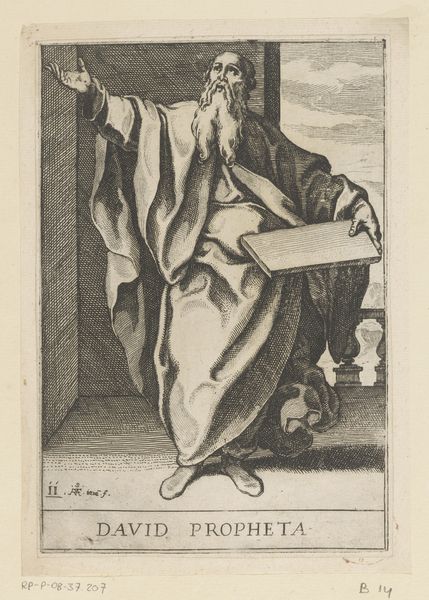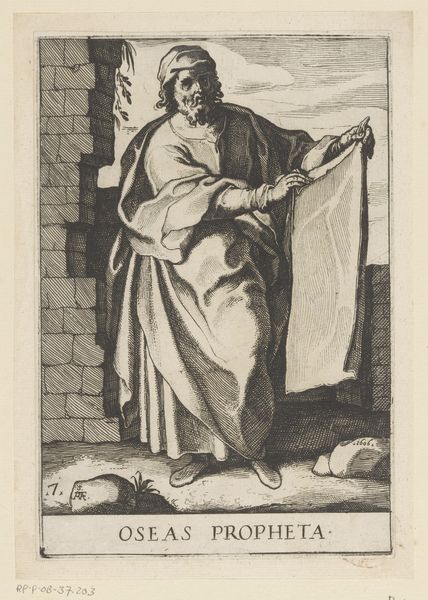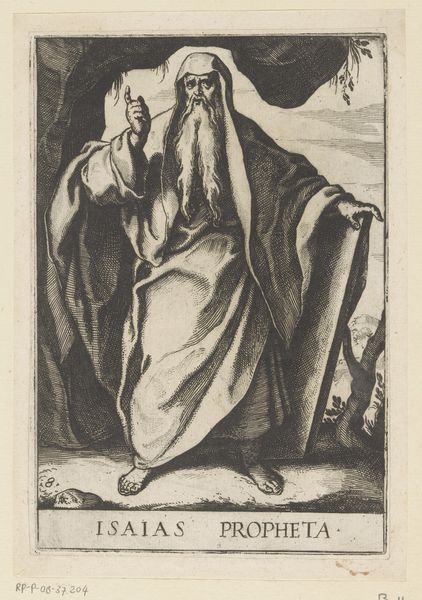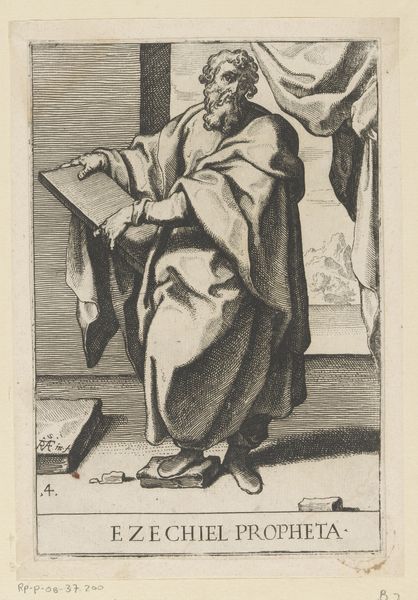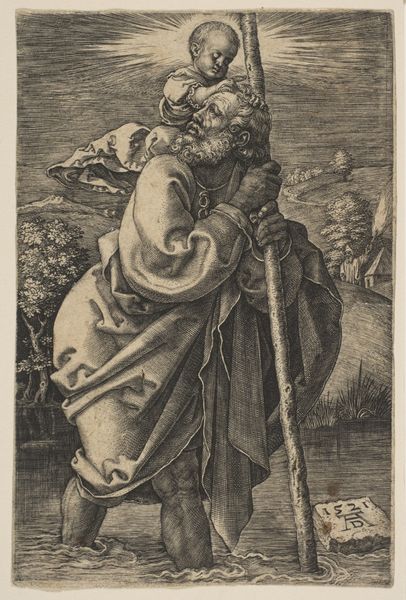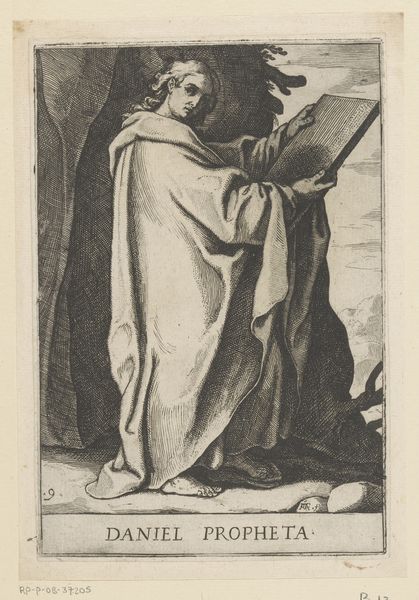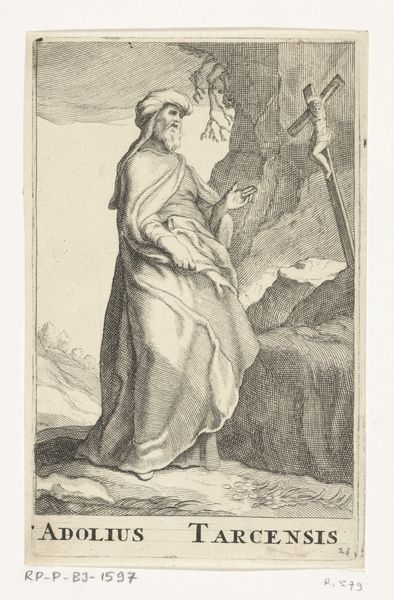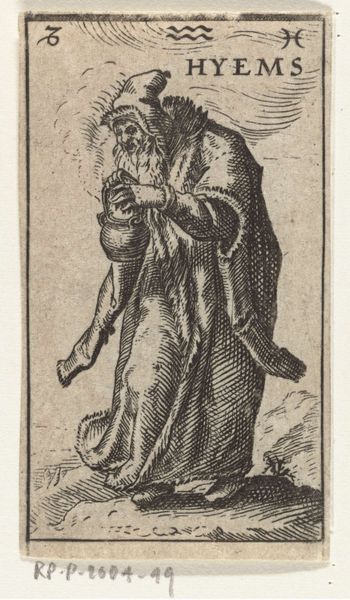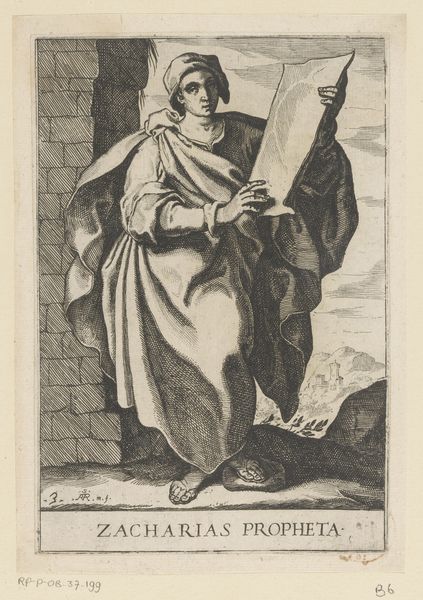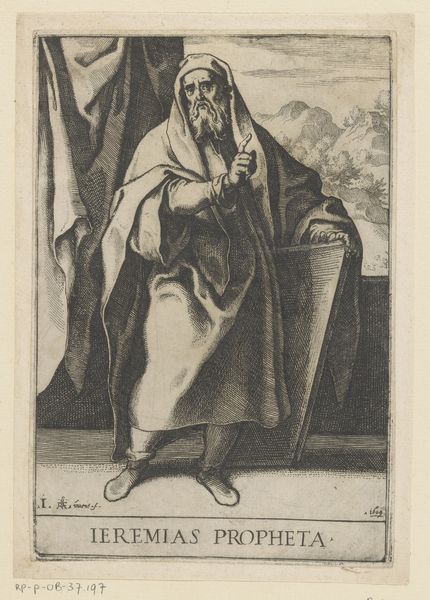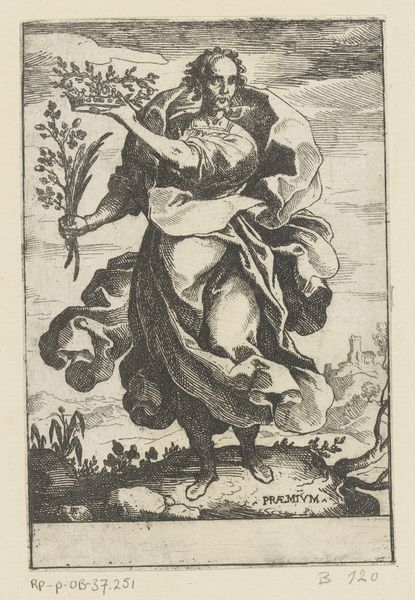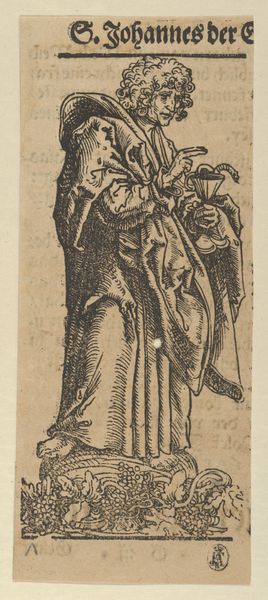
engraving
#
portrait
#
baroque
#
old engraving style
#
caricature
#
personal sketchbook
#
portrait drawing
#
history-painting
#
engraving
Dimensions: height 192 mm, width 131 mm
Copyright: Rijks Museum: Open Domain
Curator: Ah, this image possesses a certain gravity, doesn't it? It's "Prophet Jonah," an engraving made sometime between 1606 and 1609 by Raffaello Schiaminossi. Editor: My first thought is... isolation. The harsh lines of the engraving only amplify Jonah's solitude. It seems almost cruel. Curator: Consider the enduring symbolism here. Jonah holds a tablet, gesturing emphatically—perhaps issuing a divine decree, or even arguing with God himself. The tablet, a timeless symbol of law and divine command. Editor: Right, but law imposed often benefits the already powerful. I see someone confronting immense pressure. He looks burdened, resistant perhaps, not entirely in control. The looming shadow behind him only amplifies that sense of coercion. Curator: That's astute. The shadow, a Jungian might suggest it's the unacknowledged aspects of his own self, or collective doubt bearing down upon him as well. Editor: Exactly. This feels intensely personal, even agonizing. The fish lurking in the corner could even represent internalized trauma that manifests physically—consider how restrictive traditional religious norms were/are when it comes to expressions of non-conformity, in identity and beliefs. Curator: It's intriguing how Schiaminossi intertwines religious narrative with universal struggles, isn't it? Jonah becomes everyman. We may or may not feel a divine "calling" ourselves, but we're still asked to accept many uncomfortable missions during our lifetime. The engraving makes that feeling tangible. Editor: And what about the socio-political landscape that bred those struggles? To separate the 'personal' from the 'political' here risks neutralizing the potential of this work. Where are the discussions of human rights abuses and liberation movements within religious scholarship? This prophet's angst speaks to generations who have felt voiceless against greater powers. Curator: A potent point. Thank you, yes. Viewing his trials through that perspective certainly gives it even greater force, bringing it to present day with even greater weight. Editor: Precisely, making him relevant for new conversations that push for greater accessibility and equality within these institutions. It’s our responsibility.
Comments
No comments
Be the first to comment and join the conversation on the ultimate creative platform.
